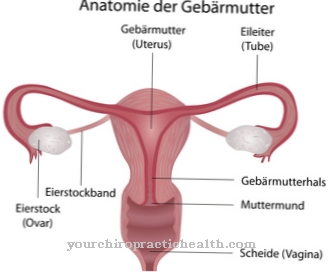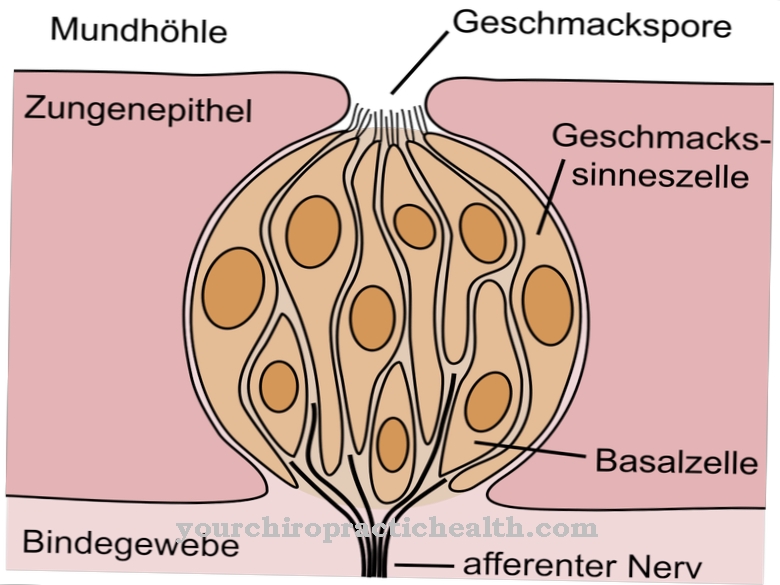The Axillary vein is a major blood conductor in the human organism. It is located in the armpit. Venous blood is transported to the heart through them.
What is the axillary vein?
The axillary vein is a blood vessel in the armpit of humans. It runs as an accompanying vein next to the axillary artery. This is a main vessel in the human organism.
The axillary vein is also known as the axillary vein due to its position and course. The armpit is located between the upper arm and the chest. Various blood vessels, muscles and nerve tracts run through them. In the axillary vein, venous blood is transported from the arm vein into the clavicle vein. This oxygen-depleted blood is returned to the heart via the axillary vein.
The axillary vein takes on further veins from the wall of the thorax and the shoulder blade on its way. The axillary vein is one of the deep veins that run along the arm. It is a great conductor of blood, whose blood is directed to the right heart. In rare cases, the axillary vein is used to insert a catheter. This happens in situations in which other options of access cannot be used for various reasons.
Anatomy & structure
The axillary vein runs through the armpit of humans. Since there is an armpit on both halves of the body, the vein conductor is designed in pairs.
The axillary vein is a connecting blood conductor that is located between the humerus vein and the clavicle vein. These are the brachial veins and the subclavian veins. The blood in the hand is transported from the hand veins via the forearm vein to the brachial vein. From there, it flows on to the axillary vein, then to the large body veins and finally to the heart. The beginning of the axillary vein is at the teres major muscle. This is a shoulder muscle that is located on the shoulder blade.
The axillary vein connects to the subclavian vein at the outer edge of the human first rib. On its way, the axillary vein receives other vein conductors from the wall of the thorax and the shoulder blade. These include the cephalic vein, the basilic vein and the thoracodorsal vein. The course of the axillary vein is concomitant to the axillary artery. This is a main vessel in the human armpit.
Function & tasks
The main task of the axillary vein is to transport venous blood. It picks up the blood from various other blood conductors and routes it to the body's veins. The axillary vein is a junction between the blood vessel in the forearm and the shoulder. The blood from the hand reaches the armpit through the forearm and upper arm. There it flows into the axillary vein.
The axillary vein then transports the blood through the armpit and directs it to the clavicle vein. The blood in the body's veins is less oxygenated than that in the arteries. If there is an external supply of medication, these reach the heart faster via the vein ducts. There they can develop the desired effect or are transported to their destination via the arteries. In addition, the vascular wall of the vein duct is thinner. This allows easier access and reduces injuries.
As soon as other venous lines are not available for placing a catheter, the axillary vein can be used for this purpose. However, this procedure on the axillary vein is extremely rare and is not only performed by experienced doctors. The prerequisite for this is that other vein conductors are so badly damaged that it is no longer possible to insert the catheter. The axillary vein is a deep vein. It cannot be seen, felt or felt from the outside. It is protected on the inside of the extremities. In the event of an accident or damage to the arm or shoulder, this reduces the risk of total failure of the blood transport.
You can find your medication here
➔ Drugs against sweating and sweatingDiseases
As soon as the vessel wall of the axillary vein is damaged, blood can leak and cause bleeding. These show up through the formation of bruises.
Although the axillary vein is protected by its course, bruises, bruises or accidents can damage the blood conductor. These should be chilled immediately to contain the spread. As long as the bleeding continues, the organism is stressed. The heart has to produce more blood in order to avoid an undersupply. If the bleeding persists, the risk of a stroke or heart attack increases. In addition, individual organs or systems can fail.
The blood serves as a transport route for various nutrients and messengers. For this reason there is a risk that existing diseases can spread through the bloodstream. This applies to inflammation, but also to cancer. The cancer cells in a tumor can detach and be carried to another location via the blood. It is possible for the cells to develop new metastases at these points. In this way there is a risk of cancer spreading. Caution should be exercised when placing a catheter into the axillary vein. Trauma can develop after removing the catheter. This manifests itself by restricting the movement of the arm.



























